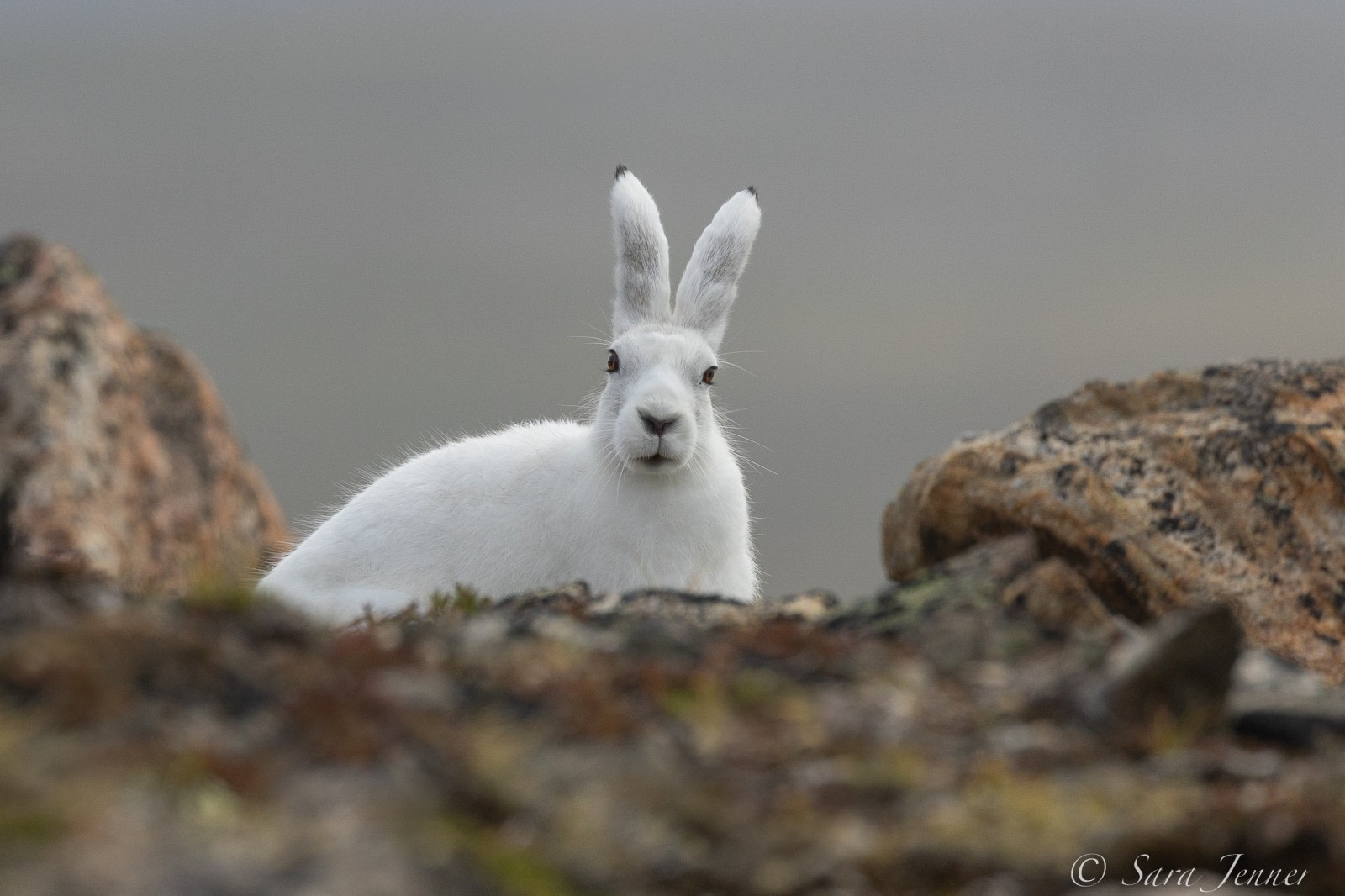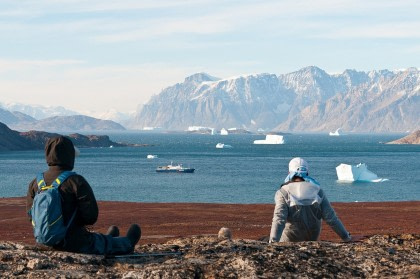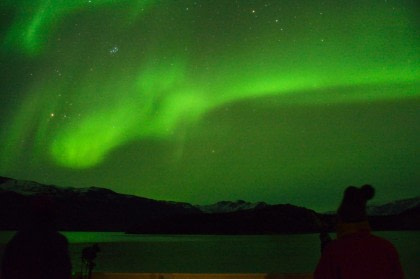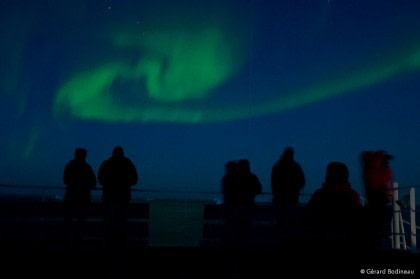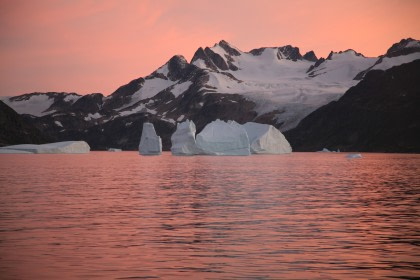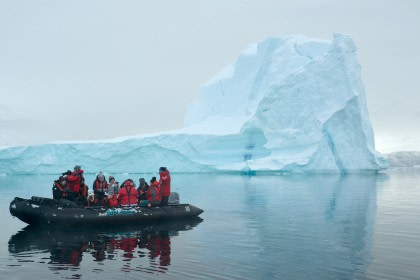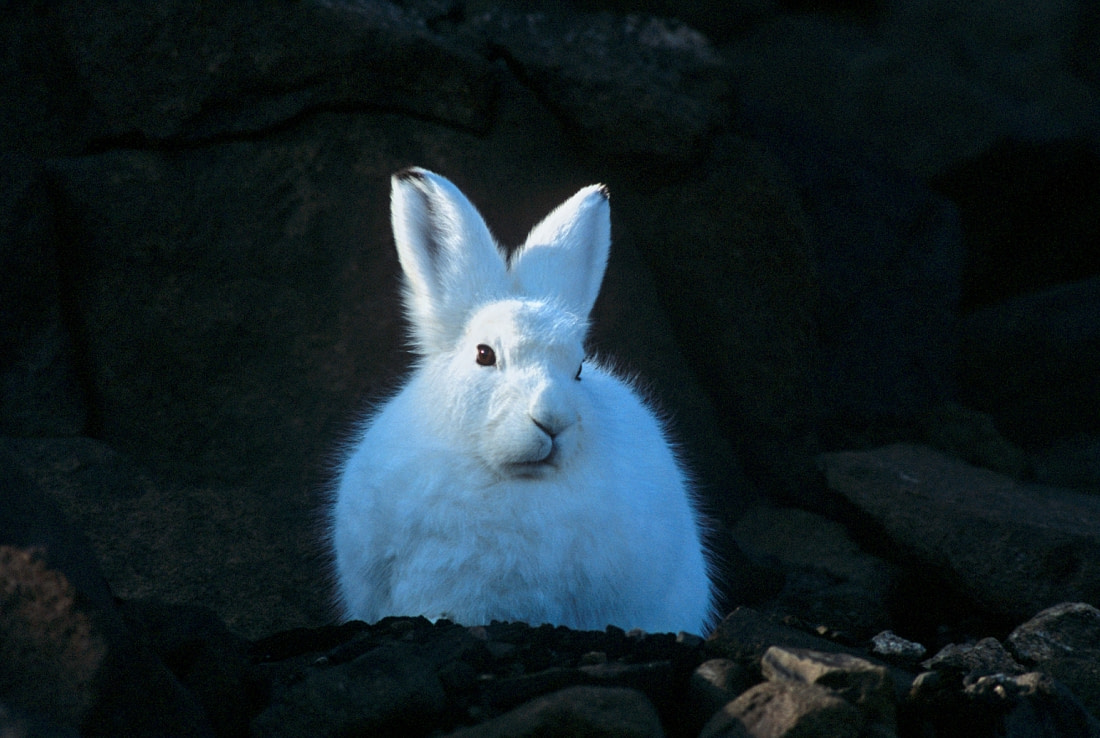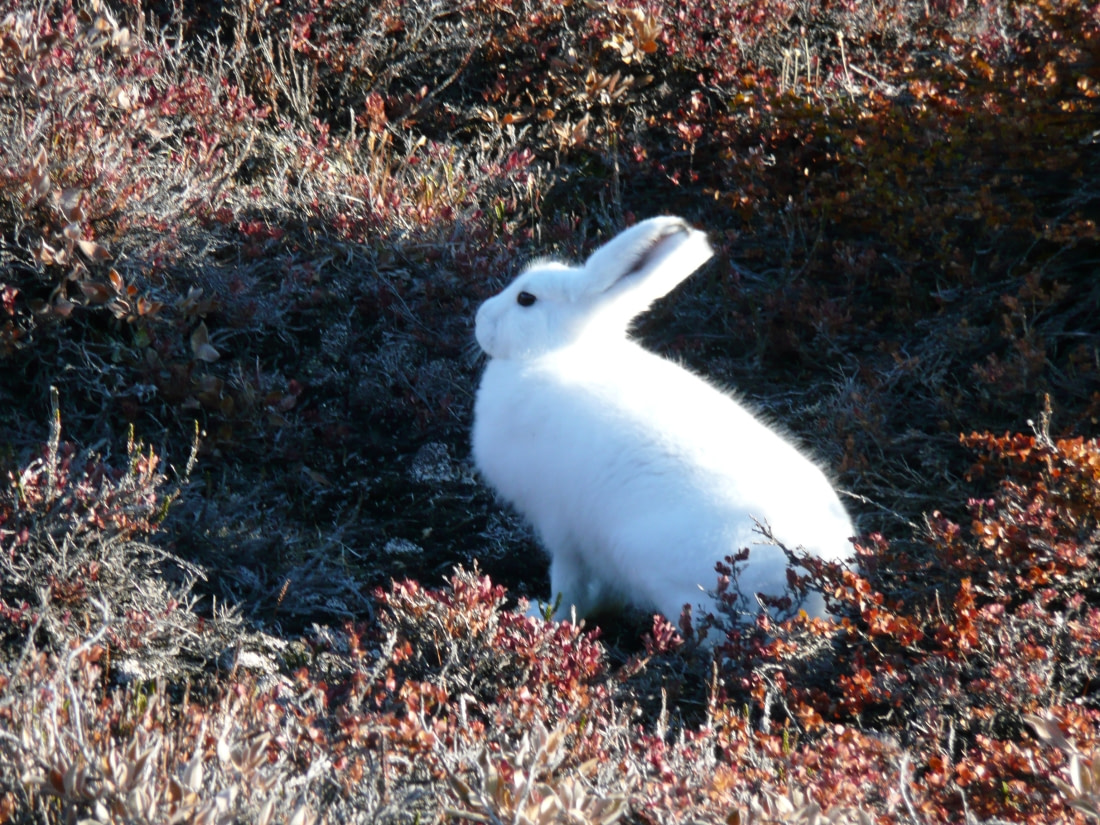Name: Arctic Hare, Polar Rabbit (Lepus arcticus)
Length: 40-70 cm (not including the tail)
Weight: 2.5-5.5 kg
Location: Arctic
Conservation status: Least Concern
Diet: Leaves, woody plants, willow, lichens, mosses, blooms, grasses, roots, seaweed.
Appearance: White, some brown depending on location and season.
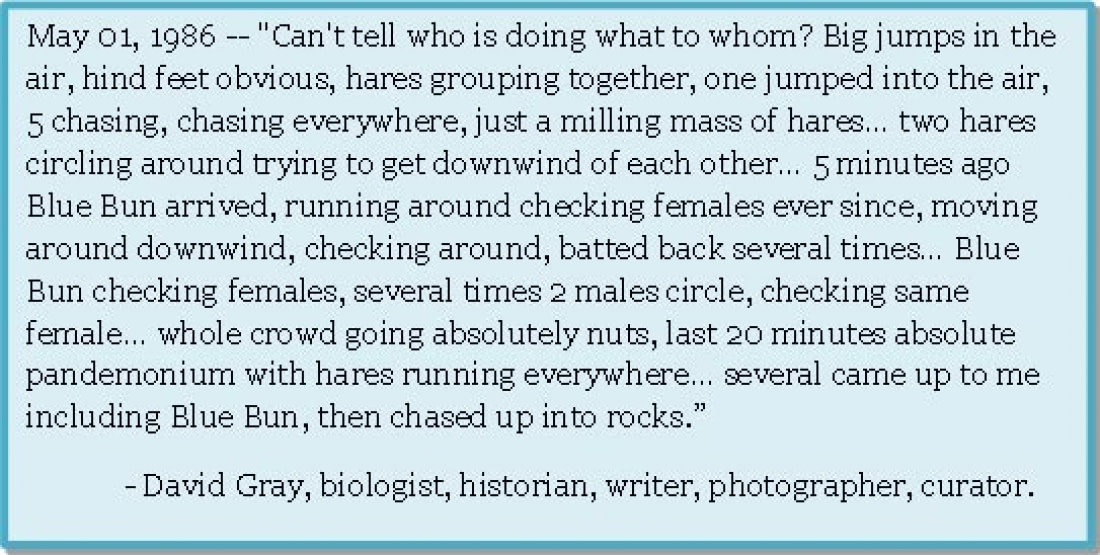
How do Arctic Hares forage?
Arctic Hares dig through winter snows to find sources of woody plants, lichens, and mosses. In warmer seasons they have easier access to tree bark, roots, berries, leaves, and buds.
Are Arctic Hares social?
Arctic Hares generally live alone, but on occasion they do group together by the dozens or even hundreds, huddling up together for warmth.
How fast can Arctic Hares move?
Arctic Hares can run up to 60 km per hour.

What are Arctic Hare mating rituals like?
For most animals mating season means a coming together. However the Arctic Hare does the opposite – they disperse and pair up. Males will sometimes visit with more than one female during the season. Observers have referred to the Arctic Hare mating season as “March Madness” (or “Midnight Madness” in the far north due to the lingering sun and later mating season) due to the chaotic activity. Males scramble around a female who may very well fight any number of them off before choosing to mate with others. Females will have up to 8 offspring called leverets in spring or early summer. The young mature quickly and by September of the same year they are young adults. They are ready to mate by the following mating season.
How long do Arctic Hares live?
Arctic Hares are believed to live an average of 3 to 5 years in the wild.
How many Arctic Hares are there today?
There has never been any sort of scientific count or estimate made of the Arctic Hare population.
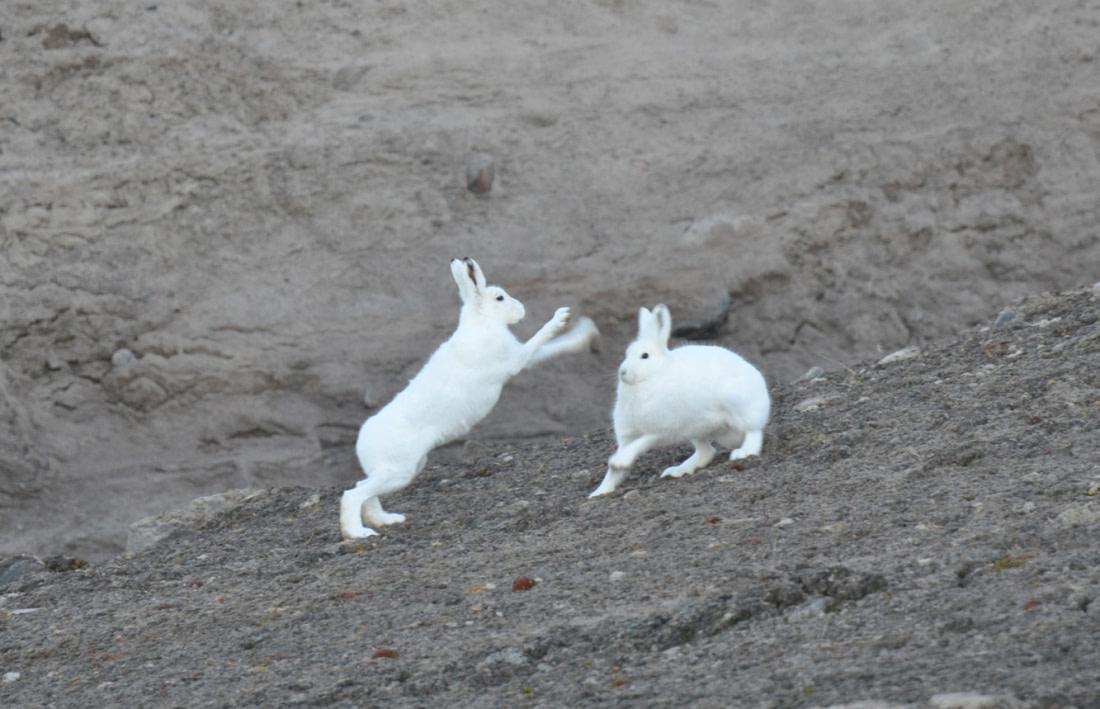
Do Arctic Hares have any natural predators?
Arctic Hares have to be on constant watch for Arctic Foxes and Red Foxes, Grey Wolves, Canadian Lynx, Ermines, Rough-legged Hawks, Peregrine Falcons, Gyrfalcons, and Snowy Owls.
7 Awesome Arctic Hare Facts
- Although it’s nicknamed the “Polar Rabbit,” the Arctic Hare is indeed a Hare. The differences include shorter ears than rabbits (meaning reduced heat loss), standing taller than rabbits, and can survive and thrive in Polar Regions.
- Arctic Hares in the far north of the Arctic remain white the year round, but those in more southern regions will moult and replace their white fur with brown fur for better camouflage during the summer season.
- Arctic Hares are one of the largest examples of the taxonomic order of Lagomorphs.
- Although Arctic Hares are predominantly folivores (leaf-eaters) they have been reported as eating fish and even the stomach contents from dead animals.
- Arctic Hares will dig holes under the snow or into the ground to both keep warm and to sleep.
- Artic Hares have black eyelashes that protect their eyes from glare.
- Because of their eye placement Arctic Hares can see 360 degrees around them without turning their heads.
